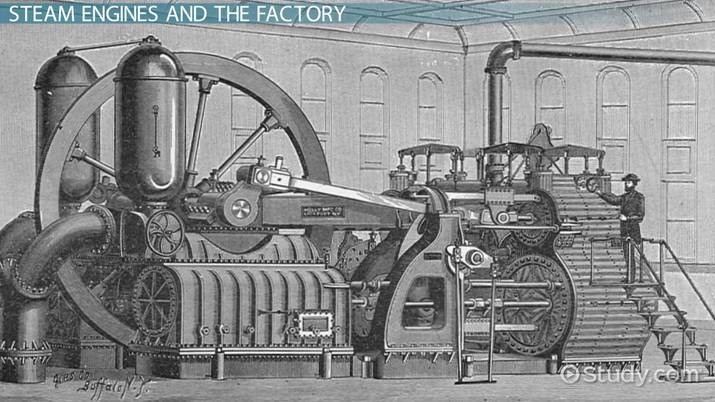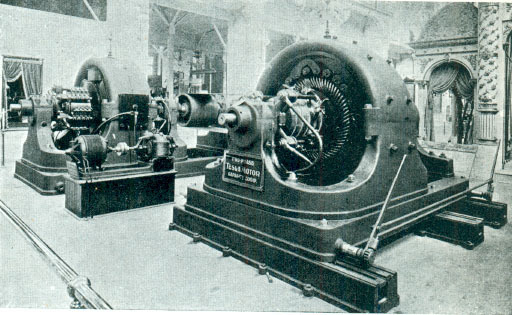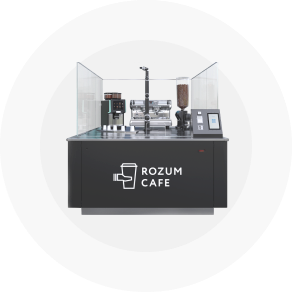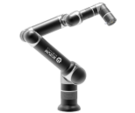Imagine a huge open space domineered by a giant engine and a formidable main shaft, hardly visible amidst hundreds of smaller subsidiaries—driving belts, gears, and other tackle. That’s how a manufacturing facility looked like in the nineteenth century, when steam machines ruled the world.
The invention of an electromotor has changed things remarkably, enabling to operate equipment not from a single “boiler,” but from individual drives, with performance times more efficient. As smaller servos came to the forefront, manufacturers got a chance to minimize workspace utilization, while obtaining more power and precise control over motion.

From vapours to electricity, from AC giants to small servos
Being part and parcel of the Industrial Revolution, steam engines made it possible to automate the bulk of previously manual operations. Working wonders of increasing labour productivity and production capacity, the machines were, however, neither safe nor overly efficient and took up lots of space. Producing vapours to move equipment involved fire hazards and required continuous supply of coal or other fuel as the mechanisms hardly ever stopped. Smaller steamers demonstrated inferior performance as compared to their larger counterparts.
A different principle of obtaining motive power, relying on electromagnetism, was discovered in 1820 by Hans Christian Oersted. The first fully functional electromotor was built in 1834 by Moritz Jacobi. The first electric alternating-current (AC) generator was installed at a Birmingham factory in 1844. The new actuators were way smaller than steamers and introduced a totally different workflow and operating environment.

Whereas steamers set production pace and logic at old factories, the newer electric drives enabled manufacturers to manage processes based on any logic at their discretion. Vapour-driven equipment was concentrated around a giant drive shaft, whereas introduction of electricity allowed distributed arrangements of hardware, again at users’ convenience.
Back in the the late nineteenth century, however, electric AC motors were single-phase, could spin in one direction only, and were more expensive to operate than steamers. They were a lot larger and by far less efficient than modern electricity-powered propulsion units. Advances in the inverter and motion control technologies has finally brought us to where we are now.
There’s a variety of powerful and compact motion solutions available, boasting highly dynamic response and a size hundreds of times smaller than that of a steam engine. These include three-phase induction AC motors, direct-current actuators, steppers. Servo motors take a special place on the technology evolution ladder. Let us explore why.
Small dimensions, but big advantages
Smaller in size than most modern drives, servos are known to deliver the following major benefits:
- With a closed-loop control circuit, servomechanisms ensure precise positioning, both angular and linear, over multiple work cycles. The design also enables regulating such critical motion parameters as velocity and acceleration with pinpoint accuracy.
- Feedback from the closed-loop circuitry provides valuable insights into manufacturing workflows, making it possible to detect and eliminate bottlenecks and productivity issues.
- There’s a possibility to build distributed systems with multiple servos driving hardware at various locations, while being managed from a single master device. Additionally, the feature facilitates integration into higher-level process management systems at manufacturing sites.
- Compact footprints save space for more high-tech hardware, opening up new opportunities to optimize performance and increase competitiveness. Substandard models are available in super small dimensions—micro, nano- and even pico.
- When geared, servo motors are capable of delivering moment of force in amounts exceeding the output of other competing technologies with bigger proportions.

Apart from small dimensions, ultra-precise positioning, and the distributed management option, RDrive servos offer impressive torque output enhanced due to in-built gearing. The weight-to-power ratio and high repeatability makes them highly efficient in industrial solutions (e.g., production line automation) and novelty applications, such as robotics. All servomechanisms in the model range support CANOpen communication and control via the Application Programming interface, which contributes to ease of their integration.
How RDrive actuators are made smaller
RDrive servos comprise multiple modules—a brushless AC motor, two encoders, a controller, a gearhead, and bearings—all fitted in an ultra-compact body. At the same time, its minimum diameter is as small as 53 mm. What is the secret behind the compact footprint?
Alternating-current motors at the core of the solution are of brushless design, manufactured using the compressed winding technology.
- Top-quality rare-earth (e.g., neodymium) magnets on the rotor ring boast three to four times higher magnetic power than the ferrite or ceramic varieties.
- The two encoders in the small servos employ the magnetic measuring technology, which not only contributes to their robustness, but also to compact dimensions.
- The embedded controller, a printed circuit board of proprietary design, eliminates the need to utilize a stand-alone drive module to control motion parameters. Commands are communicated directly from a master to individual controllers.
- The gearing mechanism relies on the strain-wave technology, multiplying torque almost a hundred-fold without increasing the servo size.
- Due to robustness and extra reliability of their components, servo motors in the series require minimum maintenance, while providing about 35,000 hours of fail-free operation.

RDrive servos are sold in gearless versions, too, with even smaller dimensions. Specialists at Rozum Robotics are ready to help end users with customization to adjust and modify basic models in accordance with the application dimensions.
Where miniature servo motors are in greatest demand?
Whereas some applications permit or even require installing bigger size engines, the following are major cases to consider using servo motors of smaller footprints:
- If you are building a robot, a compact servo, renowned for unfailing accuracy and repeatability, will get your creation to move in the precise way you want it to. Microservos in robotic hands can mimic the movements of human fingers and palms almost perfectly.
- If you run a production line, the engine will let you save floorspace in case it is restricted or if you need to fit in more than just a servo.
- If you need a drive to set a machine tool (a CNC, a lathe, etc.) in motion, reduced-size servomechanisms will simplify embedding, easily fitting into tight spaces.
- If you manufacture cameras, the miniature devices, such as a microservo, are essential to drive camera lenses to sharpen focus.
- If you operate a printing press or a printer, small servos start and stop printing heads, bringing separate text lines into alignment.
- If you need to provide automatic opening of entrance doors, a servo motor is there to enable remote control with precise settings.

Even if your case is none of the above, small servos can prove useful for your purposes: the size-to-torque characteristic and movement accuracy are too compelling to ignore.

















